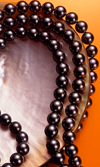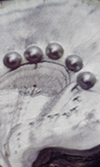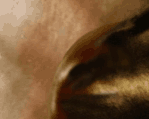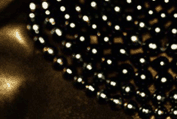| |
|
The pearl is considered the
world's first gem. Unlike diamonds and other precious
stones, pearls require no cutting or polishing
to reveal their beauty.
Pinctada Pearls works with
the best pearls in the world - South Sea Pearls,
mothered by the wild pearl oysters Pinctada maxima
and Pinctada margaritifera.
South sea pearls are graded
by shape, size, colour, lustre, nacre thickness
and surface condition.
|
|
|
  |
| Lustre
is one of the most important factors to
consider when choosing pearls. Lustre is
the soul of the pearl, and refers to the
crystallized nacre's reflection of light.
The more crystallized the nacre, the better
the luster. |
 |
  |
| A good
lustre indicates that the pearl has been
formed with a thick coating of nacre. South
Sea Pearls have up to 100 times the nacre
thickness of either Japanese or Freshwater
pearls ensuring they will last for generations. |
 |
  |
| The colour
of the pearl is determined by the environment
the oyster is growing in, the purity and
temperature of the water, the tides, the
nutrients the oyster is feeding on, and
the proximity of the growing pearl to the
darker lipped edge of the oyster. |
 |
  |
| It is difficult
for the oyster to grow a perfectly round
pearl. The pearl is formed inside the soft
body of the oyster and must move freely
so nacre can evenly and uniformly coat the
nucleus. If the oyster lies on it's side
for too long, the pearl shape will become
irregular. |
 |
  |
| The Pinctada
oysters are the largest pearl producing
oysters in the world and produce the largest
of all pearls, ranging in size from 9mm
up to 20mm in diameter. |
 |
  |
| Slight
pitting on the surface of the pearl, which
is not uncommon is caused by the movement
and growth of the pearl as it develops inside
the oyster. The cleaner the surface of the
pearl, the rarer the pearl and therefore
the more valuable. |
 |
Pinctada is now also introducing
to its rare and unusual jewellery collection,
a wonderful selection of Californian Abalone Mabe
jewellery pieces
|
 |
|
 |
|
 |
 |
 |
 |
 |
 |
 |
 |
 |
 |
|
|